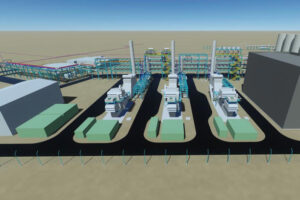Recycled plastic packaging could become electricity wires
Research from Swansea University has found how plastics commonly found in food packaging can be recycled to create new materials like wires for electricity – and could help to reduce the amount of plastic waste in the future.
The research, published in The Journal for Carbon Research, focuses on chemical recycling which uses the constituent elements of the plastic to make new materials.
While all plastics are made of carbon, hydrogen and sometimes oxygen, the amounts and arrangements of these three elements make each plastic unique.
As plastics are very pure and highly refined chemicals, they can be broken down into these elements and then bonded in different arrangements to make high-value materials such as carbon nanotubes.
During the study, the research team tested plastics, in particular black plastics, which are commonly used as packaging for ready meals and fruit and vegetables in supermarkets, but can’t be easily recycled.
They removed the carbon and then constructed nanotube molecules from the bottom up using the carbon atoms and used the nanotubes to transmit electricity to a light bulb in a small demonstrator model.
Now the research team plan to make high purity carbon electrical cables using waste plastic materials and to improve the nanotube material’s electrical performance and increase the output, so they are ready for large-scale deployment in the next three years.
Dr Alvin Orbaek White, a Sêr Cymru II Fellow at the Energy Safety Research Institute (ESRI) at Swansea University said: ‘The research is significant as carbon nanotubes can be used to solve the problem of electricity cables overheating and failing, which is responsible for about 8% of electricity is lost in transmission and distribution globally.
‘This may not seem like much, but it is low because electricity cables are short, which means that power stations have to be close to the location where electricity is used, otherwise the energy is lost in transmission.
‘Many long range cables, which are made of metals, can’t operate at full capacity because they would overheat and melt. This presents a real problem for a renewable energy future using wind or solar, because the best sites are far from where people live.’















